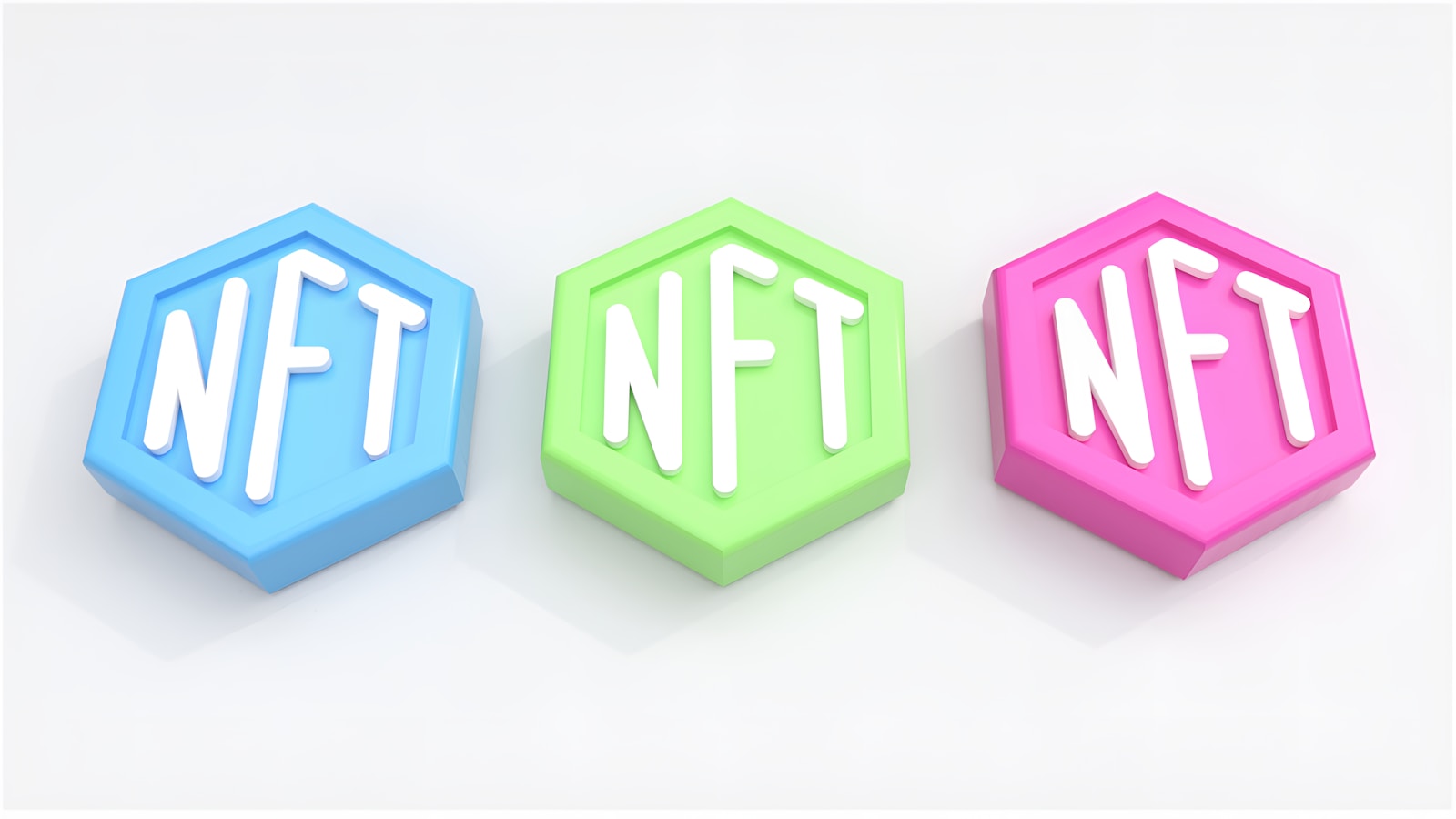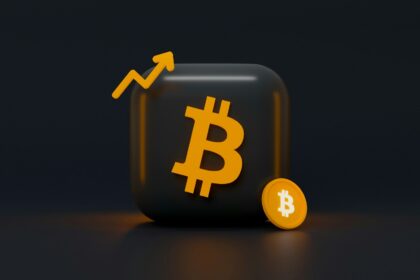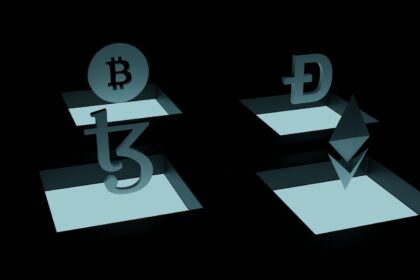Unique tokens represent a new way to prove authenticity and possession of art or collectibles online. Unlike traditional assets, these items cannot be exchanged on a one-to-one basis due to their distinct characteristics, making each token irreplaceable.
This system uses blockchain technology to record and verify transactions, ensuring that every piece linked to a token is singular and traceable. Whether it’s artwork, music, or virtual goods, the mechanism guarantees clear provenance without intermediaries.
Understanding non-fungible tokens means recognizing how they differ from cryptocurrencies like Bitcoin or Ethereum. While those are interchangeable units of value, these tokens embody exclusivity tied to specific digital creations, opening fresh opportunities for artists and collectors alike.
NFTs: Clarifying Unique Token-Based Asset Rights
Non-fungible tokens represent distinctive units of data stored on a blockchain, offering proof of exclusive possession for various items, particularly in the realm of creative works. Unlike interchangeable cryptocurrencies, these tokens certify that an asset–such as a piece of art or collectible–is singular and cannot be duplicated or exchanged on a one-to-one basis.
This technology leverages cryptographic principles to establish transparent records that confirm who holds rights over an item. The mechanism eliminates ambiguity around authenticity and provenance by encoding metadata directly into the token, which remains immutable once recorded.
Technical Foundations and Practical Applications
Each unique token is created via smart contracts deployed on blockchain platforms like Ethereum, Solana, or Tezos. These contracts define parameters such as scarcity, transferability, and royalties to original creators. For example, digital artists use this functionality to embed royalty clauses ensuring they earn from secondary sales automatically.
The adoption extends beyond art; collectibles like virtual trading cards or gaming assets utilize individual tokens to guarantee exclusivity. Consider how a single in-game sword with rare attributes can be represented as one-of-a-kind tokenized property, verifiable by anyone through public ledgers.
- Authenticity Verification: Immutable records prevent forgery by linking each token to its original creator’s address.
- Traceable Provenance: Complete ownership history is accessible transparently without intermediaries.
- Programmable Rights: Smart contracts allow automatic enforcement of conditions tied to transfers or usage rights.
The process starts with minting–a term for generating new tokens associated with specific assets. Minting requires uploading relevant files (images, audio, documents) alongside metadata such as title and description onto the blockchain. This step finalizes the creation of a non-interchangeable digital certificate that buyers can acquire or trade securely.
Understanding this framework empowers individuals to navigate emerging marketplaces confidently. By recognizing how unique cryptographic tokens function as certificates for creative content or collectibles, users gain clarity on how decentralized systems safeguard authenticity and enable direct control over possessions without reliance on traditional custodians.
How NFTs Verify Ownership
The verification of possession within blockchain-based tokens hinges on their inherent uniqueness and secure ledger entries. Each token represents a singular item, often linked to creative works such as art, ensuring that the recorded holder is unmistakably associated with that particular piece. The immutability of blockchain records prevents alteration or duplication, providing an incontrovertible proof of who controls the asset at any given moment.
Tokens carry metadata embedded directly on-chain or via decentralized storage systems, which detail the attributes and provenance of the asset they signify. This means collectors or users can trace the history back to the original creator without intermediaries, confirming authenticity alongside possession. Such transparency is vital in distinguishing genuine items from counterfeit reproductions.
Technical Foundations Behind Verification
At its core, the system employs smart contracts–self-executing code on blockchain platforms–that assign a unique identifier to each token. This ID cannot be replicated or transferred without explicit transaction signatures from the current holder’s private key. When a transfer occurs, it is logged across all nodes in the network, synchronizing ownership records instantaneously and permanently.
This mechanism eliminates ambiguity by using cryptographic proofs rather than centralized registries prone to errors or fraud. For instance, if an artist releases a limited series of digital artworks as tokens, buyers receive exclusive rights tracked transparently through these smart contracts, ensuring no two owners claim identical pieces.
An illustrative case involves a popular digital artist who minted a collection where each token includes not only artwork files but also unlockable content accessible solely to verified holders. Access control integrates seamlessly with ownership verification protocols, showcasing how tokenization can extend beyond mere representation into functional benefits tied explicitly to possession status.
- Step-by-step ownership confirmation:
- The creator generates a unique token through a smart contract.
- The initial assignment links this token to their blockchain address.
- A buyer acquires the token via a signed transaction recorded on-chain.
- The ledger reflects this transfer across all nodes without delay.
- Ownership queries verify possession by checking current holder’s address against the ledger data.
This clear chain of custody significantly reduces disputes over authenticity or authority to resell items such as collectibles or artwork replicas. It also empowers artists and creators by embedding royalties into contract logic, automatically compensating them upon secondary sales–an innovation impossible under traditional frameworks without intermediaries.
Understanding these mechanisms helps users appreciate how tokens function beyond simple certificates: they are enforceable claims encoded into global networks designed for permanent recognition of uniqueness and control over specific assets like artwork. This paradigm shift introduces reliability and accountability previously unattainable in purely analog markets, fostering confidence among participants regardless of technical background.
Buying and selling NFTs
Acquiring unique cryptographic tokens involves selecting a reliable marketplace where non-fungible assets are traded. Platforms like OpenSea, Rarible, and Foundation offer user-friendly interfaces that allow buyers to browse collections of art and collectibles verified on blockchain networks such as Ethereum. Before purchasing, it is critical to verify the authenticity of the token by checking its contract address and metadata linked to the asset, ensuring it represents the original work rather than a copy.
Sellers must prepare their tokens by minting them through smart contracts that register each item as a one-of-a-kind entity on the blockchain. This process assigns a distinct identifier to the asset, confirming its scarcity and provenance. Setting clear terms for transfer–such as fixed pricing or auction formats–helps streamline transactions while smart contracts automatically enforce these conditions without intermediaries.
Technical aspects of trading unique tokens
Transactions involving non-interchangeable tokens rely on blockchain confirmations that guarantee secure transfer of rights from seller to buyer. Each sale triggers an immutable record update, preventing duplication or unauthorized reproduction. Wallets compatible with Ethereum standards (ERC-721 or ERC-1155) are essential tools for holding and managing these items safely during exchanges.
Case studies have shown that artists leveraging platforms with robust verification systems minimize risks related to counterfeit works. For instance, an artist releasing limited-edition digital illustrations can track sales history transparently via token IDs embedded in the chain. Buyers benefit from this traceability by confidently investing in pieces whose rarity is verifiable through public ledgers rather than relying solely on external claims.
Storing NFTs securely
Protecting unique tokens requires careful management of private keys and storage environments. The safest approach involves using hardware wallets, which keep cryptographic keys offline and resistant to hacking attempts. Devices like Ledger Nano or Trezor provide robust security by isolating the signing process from internet-connected devices, minimizing exposure to malware.
Understanding the distinction between on-chain metadata and off-chain asset storage is critical. While non-fungible tokens record ownership data on a blockchain, the associated art or media files often reside on external servers or decentralized networks like IPFS. Securing access to both layers ensures comprehensive protection against data loss or unauthorized duplication.
Best practices for securing non-fungible assets
First, always use wallets compatible with ERC-721 or ERC-1155 standards, as they are designed specifically for handling unique tokens. Employ multi-factor authentication on all accounts linked to marketplaces or custodial services. This adds an additional verification step that reduces risks from phishing and credential theft.
Next, consider backup strategies for wallet seed phrases–write them down physically in multiple secure locations rather than storing digitally where they might be compromised. For collectors holding valuable pieces of art, cold storage solutions combined with encrypted backups offer a reliable safeguard against accidental deletion or ransomware attacks.
- Utilize hardware wallets for key isolation
- Backup seed phrases offline in secure spots
- Enable multi-factor authentication wherever possible
- Verify authenticity through blockchain explorers regularly
- Avoid sharing private keys or recovery phrases under any circumstances
A practical example comes from a case study involving an artist who lost access to their exclusive tokenized artwork after relying solely on online wallets without backups. Their inability to recover credentials resulted in permanent loss of control over their asset, highlighting why redundancy matters when managing irreplaceable items.
Lastly, staying informed about phishing schemes targeting holders of unique tokens can prevent costly mistakes. Scam attempts often mimic official platforms prompting users to input sensitive information. Employ browser extensions that flag suspicious websites and double-check URLs before interacting with marketplaces or signing transactions.
Using Non-Fungible Tokens Beyond Art
Non-fungible tokens extend far beyond the realm of traditional artworks, offering unique applications in various sectors by providing verifiable proof of singularity and authenticity. For instance, in the gaming industry, these tokens represent exclusive in-game assets such as skins, weapons, or characters that players can truly claim and trade without intermediaries. This approach ensures scarcity and traceability, distinguishing each token from any other and enhancing player engagement through tangible digital possessions.
In real estate, non-fungible tokens serve as immutable certificates for property titles or land deeds recorded on blockchain networks. This method reduces fraud risks and streamlines transactions by creating a transparent ledger where ownership history is publicly accessible and cannot be altered. By tokenizing physical assets into unique identifiers, stakeholders achieve efficient verification processes that simplify legal and financial procedures.
Expanding Use Cases Through Verified Tokenization
The music industry benefits significantly from this technology by issuing exclusive tracks or limited-edition albums as unique tokens linked to rights management and royalties distribution. Musicians can retain control over their creations while enabling direct sales to fans, bypassing traditional intermediaries. This structure allows precise tracking of token holders and automates royalty payments via smart contracts coded onto the blockchain.
Educational credentials also gain enhanced credibility when issued as non-fungible tokens on secure ledgers. Universities and training programs create tamper-proof certificates that students can share instantly with employers or institutions worldwide. These tokenized diplomas not only confirm authenticity but also enable lifelong access to verified academic achievements without relying on centralized databases vulnerable to manipulation.
Supply chain management employs unique tokens to monitor goods from production to delivery stages effectively. Each product receives a distinct identifier capturing detailed provenance data, ensuring transparency for consumers concerned about ethical sourcing or quality assurance. By integrating non-fungible tokens within logistics frameworks, companies establish trust through traceable records inaccessible to falsification or duplication.
Risks in NFT Investments: A Critical Perspective
Investing in unique cryptographic tokens linked to creative works, such as art, carries inherent risks that must be carefully evaluated. The value of these tokens is highly volatile and often driven by speculative demand rather than intrinsic qualities. This volatility can lead to rapid depreciation, especially when market sentiment shifts or if the underlying asset’s provenance or authenticity is questioned.
Technical vulnerabilities also pose significant threats. Smart contract bugs, platform security flaws, and the permanence of blockchain records mean that mistakes or malicious activities can result in irreversible losses. For example, if a token’s metadata hosting service fails or is compromised, what appears as unique and verifiable ownership may become meaningless.
Key Risk Factors and Future Considerations
- Lack of Regulatory Clarity: Without clear legal frameworks governing these tokens, investors face uncertainty regarding rights enforcement and dispute resolution.
- Liquidity Constraints: Unlike traditional assets, trading volumes can be thin, making it difficult to exit positions without significant price impact.
- Fraud and Misrepresentation: Cases where counterfeit or plagiarized artworks are tokenized highlight the need for robust verification mechanisms beyond blockchain immutability.
- Environmental Impact Concerns: Energy-intensive consensus protocols affect sustainability perceptions, influencing long-term adoption and regulatory scrutiny.
The trajectory of these unique digital collectibles will depend on advancements in protocol interoperability, enhanced metadata standards ensuring persistent linkage to physical or digital originals, and improved user interfaces that demystify complex technical interactions. For instance, integrating decentralized identity solutions could bolster trust by verifying creators’ authenticity while preserving privacy.
In summary, understanding the multifaceted risks tied to these cryptographically secured tokens requires continuous learning and cautious engagement. As technology matures and ecosystems evolve towards greater transparency and resilience, investors equipped with both foundational knowledge and critical insight will be better positioned to navigate this innovative yet challenging domain confidently.





